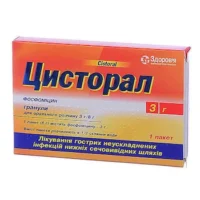Description
Spectracef (Cefditoren) Coated Tablets 200 mg
Ingredients:
Each coated tablet contains 200 mg of cefditoren pivoxil.
Dosage:
The usual dose for adults is 400 mg twice daily. Dosage may vary based on the condition being treated.
Indications:
Spectracef is indicated for the treatment of mild to moderate infections caused by susceptible bacteria. It is commonly prescribed for respiratory tract infections, skin and soft tissue infections, and urinary tract infections.
Contraindications:
Do not use Spectracef if you are allergic to cefditoren or other cephalosporin antibiotics.
Directions:
Take Spectracef exactly as prescribed by your healthcare provider. It can be taken with or without food. Finish the full course of treatment even if you start to feel better.
Scientific Evidence:
Studies have shown that cefditoren, the active ingredient in Spectracef, is effective against a wide range of bacterial infections. Research published in the Journal of Antimicrobial Chemotherapy demonstrated the efficacy of cefditoren in treating respiratory tract infections.
Additional Information:
- Pregnancy and Lactation: Consult your doctor before using Spectracef if you are pregnant or breastfeeding.
- Side Effects: Common side effects may include nausea, diarrhea, and headache. Contact your healthcare provider if you experience severe or persistent side effects.
Pharmacological Effects: Cefditoren works by inhibiting the synthesis of bacterial cell walls, leading to the death of the bacteria. It has a broad spectrum of activity against both Gram-positive and Gram-negative bacteria.
Clinical Trials: In a comparative study published in the International Journal of Infectious Diseases, cefditoren showed similar efficacy to other antibiotics in the treatment of skin and soft tissue infections, with a favorable safety profile.





